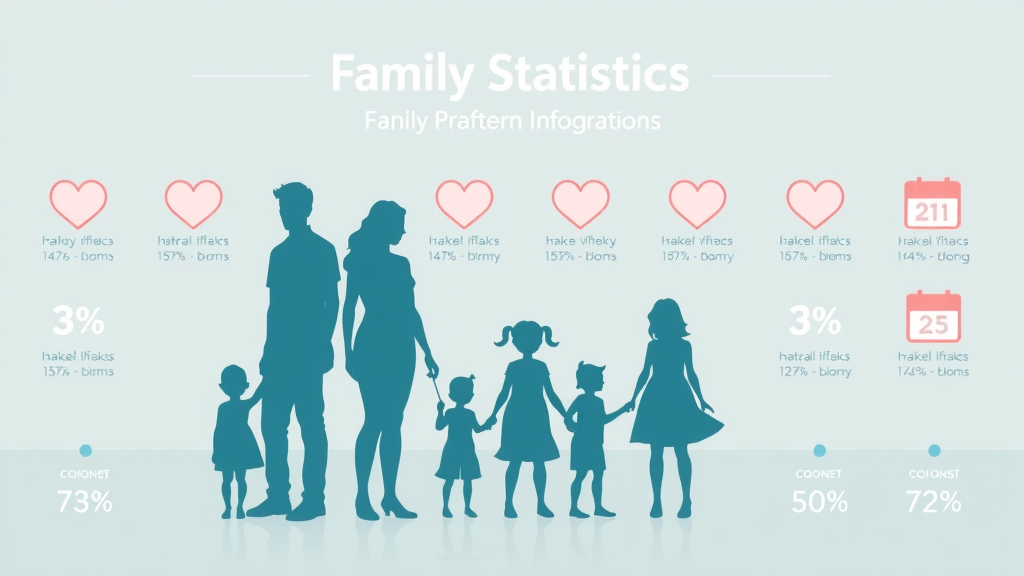Did you know more than 60% of teens feel unprepared for life beyond high school? The journey to adulthood is both exhilarating and daunting. For many families, balancing the right amount of freedom with necessary safety guidance is an ongoing challenge during the teenage years. This guide dives deep into teen independence guidance: what it really means, why it matters, and how to help your teen thrive securely while building the life skills every young person needs for lasting success.
A Surprising Start: The Reality of Teen Independence
More than 60% of teens feel unprepared for life beyond high school (National Survey, 2023).
As the teenage years arrive, changes emerge rapidly for both teens and their parents. Independence is no longer just an idea—it's an essential part of growing up and an inevitable stage of life. Many parents are surprised to discover just how unprepared their children feel when it comes to handling responsibilities on their own. For teens, this is a challenging time: making decisions, managing new freedoms, and learning to deal with consequences are all part of their healthy development.
Recent studies confirm that teen independence guidance is more important than ever. As young people face growing pressures at school, home, and online, they need practical skills to navigate these challenges safely. Guidance tailored to this period of life not only improves decision-making but also builds emotional resilience and confidence—traits that can last a lifetime.

What You’ll Learn from This Teen Independence Guidance Article
Key principles of teen independence guidance
Common challenges teens face on the path to independence
Practical strategies for fostering safe independence in teens
Tools and resources to support independent decision-making
How to balance freedom with responsibility
Defining Teen Independence: Guidance and Growth
"Teen independence is not about letting go entirely—it's about letting go safely." – Dr. Lisa Hammond, Adolescent Psychologist
Teen independence guidance is about much more than parents setting rules or teens pushing boundaries. It’s a journey where both sides learn, adapt, and grow. Independence in the teenage years is when young people start navigating the world on their own terms—developing critical thinking, making decisions, and managing the consequences. However, safe independence isn’t about letting go completely. Instead, it means providing a supportive environment where teens can learn through experiences while parents and caregivers remain a safety net.
This approach encourages teens to spread their wings while knowing they’ll have a soft place to land. It builds both confidence and independence, equipping them with essential life skills. Guidance during this time is all about balancing trust with oversight, allowing teens to grow while still maintaining the strong connections that keep lines of communication open and promote healthy development.

Understanding the Stages: How Teen Independence Evolves
Developmental Stages of Teen Independence |
Key Behaviors |
Guidance Techniques |
|---|---|---|
Early Adolescence (Ages 12-14) |
Seeking privacy, small decisions, reliance on routines |
Discuss boundaries, explain reasons, encourage safe exploration |
Middle Adolescence (Ages 15-17) |
Desiring autonomy, peer influence strong, experimentation |
Promote open dialogue, involve in decision-making, model responsibility |
Late Adolescence (Ages 18+) |
Planning future, taking larger risks, preparing for adulthood |
Allow higher responsibility, support self-advocacy, offer mentorship |
Understanding these stages helps parents and caregivers adapt their approach. What works for a 13-year-old may not fit a 17-year-old eager for independence. Recognizing these shifts ensures your guidance meets the individual needs of an independent teen, offering advice and freedom appropriate for their age and maturity.
Each stage of life brings new challenges and opportunities. Safe, gradual increases in responsibility support healthy development and teach important lessons. From learning to manage chores and schedules to overseeing social media use, being present as your teen grows supports strong foundations for future success.
Why Teen Independence Matters
Improving decision-making ability: Giving teens space to make their own decisions strengthens this critical life skill for adulthood.
Building emotional resilience: Facing challenges and occasional failures teaches young people how to bounce back.
Establishing personal responsibility: Taking on duties—from chores to managing schoolwork—helps teens grow up prepared and confident.
Teen independence guidance is essential for preparing young adults for the real world. When parents encourage independent thinking, it not only enhances self-esteem but also reduces anxiety about the unknowns of adulthood. The act of making mistakes, reflecting, and trying again is what truly builds resilience.
For teens, every milestone—getting a driver’s license, maintaining part-time jobs, or even navigating social media—develops a range of life skills and confidence that prove invaluable later. So, supporting independence is a good idea for families looking to strengthen their bonds and prepare teens for all stages of life.
Balancing Freedom and Safety in Teen Independence Guidance
Setting Healthy Boundaries
Striking the right balance between granting freedom and setting limits is at the heart of effective teen independence guidance. Establishing clear, consistent boundaries provides the stability and safety teens need, even as they push for more autonomy. Parents set these boundaries not as punishment, but as guidelines that help their children navigate complex situations—such as resisting peer pressure regarding drugs and alcohol or managing time between school and leisure.
Healthy boundaries adapt as teens mature. Early on, they might include curfews or limits on screen time. As trust grows, these can shift to broader responsibilities, such as managing their own schedules or making decisions about activities and friendships. This gradual increase in freedom, paired with ongoing guidance, empowers teens to become self-reliant while still knowing their family’s support is unwavering.
Recognizing Signs of Struggle
As teens gain more independence, it's crucial for parents to recognize when their child is struggling rather than thriving. Signs of difficulty can include sudden changes in behavior, dropping grades, withdrawal from family or friends, or risky choices. The part of the brain responsible for impulse control is still developing during the teen years, so young people may sometimes need extra support and supervision.
Effective teen independence guidance means noticing these warning signs early and responding with compassion rather than punishment. When challenges arise, maintaining open communication is key. If a teen feels they can turn to their parents or caregivers without fear of harsh judgment, they're more likely to ask for help and learn from setbacks, making this period an essential time for growth and building resilience.

Communication Tips: Fostering Open Dialogue for Teen Independence Guidance
Active listening techniques
Encouraging honest conversations
Dealing with disagreements without confrontation
Keeping the lines of communication open is the backbone of successful teen independence guidance. Active listening techniques, such as giving full attention, making eye contact, and reflecting back what your teen says, demonstrate respect and help your child feel heard. This approach reassures teens that their opinions are valued, making it more likely they'll come to you when they’re facing difficult situations.
Encouraging honest conversations involves more than just asking questions. Try to create regular, low-pressure opportunities for your teen to share—maybe during car rides or mealtimes. When disagreements do happen (and they will, during these teenage years), strive to stay calm. Address issues openly, acknowledge emotions, and avoid confrontation. As one parenting expert says:
"The most independent teens are those who know their parents will listen without judgment."
Teen Independence and Social Media: Guidance in a Digital World
Benefits and Risks of Social Media in Teen Independence
The rise of social media has dramatically changed what it means to be an independent teen. Platforms like Instagram, TikTok, and Snapchat are now an integral part of how young people connect, express themselves, and even make decisions about their identity. Social media can be a good idea for developing communication skills, exploring interests, and maintaining friendships, especially for those who might feel isolated in their offline worlds.
However, social media also presents unique risks—exposure to cyberbullying, peer pressure, and harmful content. The digital landscape often blurs boundaries between public and private life, raising concerns about safety and privacy. Teen independence guidance today means equipping teens not only to use these tools wisely but also to handle potential dangers with confidence and resilience.
Monitoring Online Activities without Overstepping
While it’s natural to worry about your teen’s online life, effective guidance involves supervision without invading privacy. Begin with open, honest discussions about safe online behavior: the importance of thinking before posting, understanding privacy settings, and recognizing red flags like unsolicited messages. Let your teen know you’re confident in their ability to make good decisions, but that you’ll step in if you see warning signs or risky behaviors.
Apps that provide insights into your teen’s digital usage—without giving you full access to every message—can promote safety while preserving trust. Remember, the goal is to teach responsible use, not to create a secretive atmosphere. When teens know their parents trust them but will step in when needed, they’re more likely to thrive independently in a digital world.

Letting Teens Make Mistakes: A Critical Component of Teen Independence Guidance
The Value of Learning Through Failure
Allowing teens to make mistakes is an essential part of healthy development. No matter how carefully parents plan, every young person will face setbacks, make poor choices, or occasionally ignore good advice. These experiences offer powerful lessons—they teach teens how to adapt, recover, and do better next time.
Making mistakes is not only inevitable but necessary for learning. When teens face manageable failures—missing a homework assignment or overspending their allowance—they sharpen their problem-solving skills and learn to take responsibility for their actions. Parents should resist the urge to rush in and rescue; instead, guide your child through the aftermath, discuss what went wrong, and help them make decisions moving forward. This supportive approach strengthens independence and builds resilience that will benefit them throughout adulthood.
Short expert explainer: The importance of letting teens learn from mistakes (animated or live-action, 2-3 minutes).
Helping Teens Make Decisions: Developing Critical Thinking
Steps to empower independent teen decision-making
Examples of age-appropriate choices
Guidance for discussing the consequences of decisions
Developing strong decision-making skills is at the core of teen independence guidance. Start by empowering your teen to make choices about aspects of their own lives—for example, selecting extracurricular activities, planning schedules, or managing an allowance. Gradually increase the scope of these decisions as your teen demonstrates maturity and responsibility.
Provide clear guidance by discussing possible consequences openly before choices are made. Reflect on outcomes together afterwards—what worked well, what could be improved, and how to approach things differently next time. This builds critical thinking and confidence, showing teens their decisions matter and are an essential part of growing into capable young adults.
The Role of Support Systems in Teen Independence Guidance
Mentors and positive adult influences
Community and extracurricular programs
Resources for both teens and parents
No teen should have to navigate independence alone. In addition to parents and caregivers, trusted adults—coaches, teachers, counselors—provide invaluable wisdom and encouragement. Community programs and extracurricular activities introduce new skills and perspectives. Together, these resources ensure that teens have a broad support network, increasing their confidence and ability to handle challenges.
Parents can learn too: connecting with support groups, reading about authoritative parenting, or accessing online resources tailored to teen years. By weaving together these systems, families create a nurturing environment where independence is both encouraged and safeguarded.
Practical Strategies: Tools and Resources for Teen Independence Guidance
Creating independence plans: Outline age-appropriate steps and responsibilities, revisiting and updating regularly as your teen grows.
Encouraging part-time jobs or volunteer work: Practical experience teaches real-world skills and builds self-worth.
Utilizing apps and online tools for safety and organization: From family calendars to emergency contact lists, modern technology can help teens manage daily life while staying safe.
Each of these strategies not only reinforces the fundamentals of teen independence guidance but also provides tangible opportunities for growth. Encourage your teen to try new things—host family meetings to revisit independence goals, support them in pursuing internships or volunteering, and help them select tools that keep them organized and safe. The journey may include setbacks, but with the right resources, your teen will be well-equipped to handle whatever comes next.

Common Obstacles to Teen Independence and How to Overcome Them
Peer pressure
Anxiety about responsibility
Parental fears and letting go
Even with the best intentions, obstacles will arise on the path toward teen independence. Peer pressure can cloud judgment, leading young people to make decisions that contradict their values. Anxiety—either about handling responsibility or fear of failure—may cause teens to hesitate or avoid new challenges. Meanwhile, parents face their own struggles, grappling with fears about safety, letting go of control, and trusting their children to make good choices.
Awareness and open communication are the first steps in overcoming these hurdles. Address peer pressure through honest conversations about values, role-playing possible scenarios, and encouraging your teen to seek out friends with similar goals. Address anxiety by breaking responsibilities into manageable steps and celebrating progress—even small wins matter. Finally, parents can benefit from support, too, learning to balance guidance with trust as their child grows.
Solutions and Supportive Approaches
Addressing teen independence challenges takes patience and creativity. Involve your teen in setting goals and boundaries—when they’re invested in the process, they’re more likely to stick to the plan. Seek outside support from school counselors or mental health professionals if needed. Encourage friends and family to be positive influences, reinforcing the values you're teaching at home.
Ultimately, the strongest solutions arise from partnership. By tackling these obstacles together, families can turn struggles into powerful learning experiences, preparing teens for a lifetime of independent decision-making and self-reliance.

People Also Ask: Teen Independence Guidance
How can parents safely encourage teen independence?
Parents can support teen independence guidance by gradually increasing responsibilities and freedoms in a structured way. Start with simple decisions and tasks, then slowly allow your teen to make more choices as they demonstrate maturity. Support open communication and let your teen know you are available for guidance without judgment. Remember, balancing freedom and safety is about guiding, not controlling, and letting your child know you trust them to learn and grow.
What are warning signs that a teen is struggling with independence?
Warning signs of struggle can include withdrawal from family or friends, sudden drops in grades, mood swings, or engaging in risky behaviors. If your teen seems overwhelmed, stressed, or avoids tasks they used to manage, it could signal difficulties adjusting to new responsibilities. Regular check-ins, open dialogue, and a supportive environment help parents spot challenges early and address them before they escalate.
Should teens be allowed to make mistakes?
Absolutely. Making mistakes is a vital part of the learning process, especially during the teenage years. By allowing teens to take risks and experience both success and failure, parents foster growth, resilience, and critical thinking. Guide your teen through mistakes with empathy and support, showing that errors are not the end, but a path to valuable life lessons and stronger independence.
FAQs about Teen Independence Guidance
What is the right age to encourage independent decisions? Start early with small choices in middle school, increasing opportunities for independence as your teen demonstrates responsibility. Every child develops at a different pace, so use your best judgment and maintain open communication.
How much freedom is too much? Freedom should always be balanced with safety and supervision. Gradually increase your teen’s independence as they show readiness; always be available for support and guidance.
How can technology help—or hinder—teen independence? Technology can be a powerful tool for learning, organization, and communication, but it also poses risks such as distractions, cyberbullying, and privacy issues. Teach responsible use, establish clear boundaries for device time, and use tech together to reinforce positive habits.
Key Takeaways on Teen Independence Guidance
Teen independence guidance is crucial for building life skills and confidence.
Open communication and support are as important as boundaries.
Safe independence is a balance between freedom and responsibility.
Conclusion: Supporting Teen Independence Guidance for Lifelong Success
Empowering your teen with structured guidance, open dialogue, and ongoing support will set the foundation for adult confidence, resilience, and safe independence.
Get Involved: Support Your Teen’s Independence Today
Ready to start? Begin by having an open conversation with your teen tonight. Review your family’s goals for independence, celebrate progress, and set new challenges together for tomorrow’s success.
 Add Row
Add Row  Add
Add 





Write A Comment